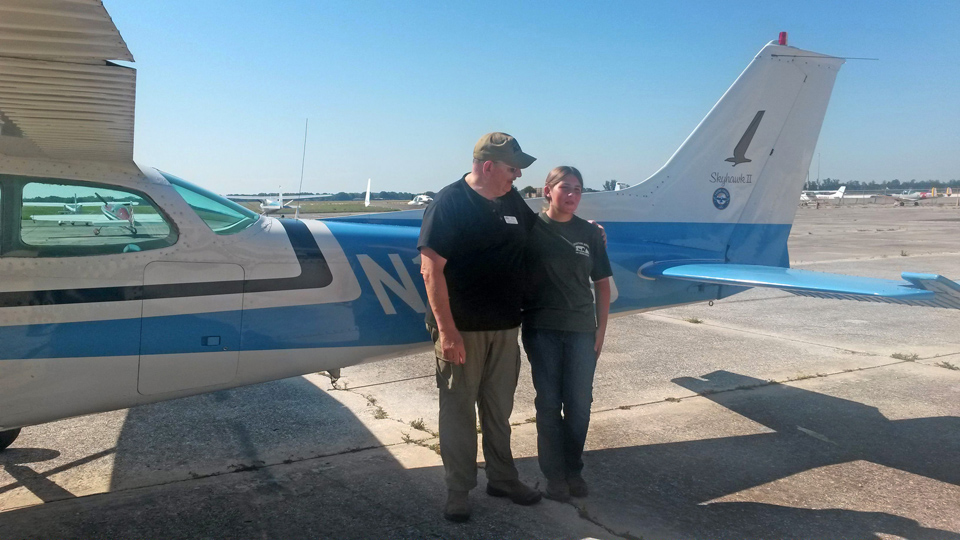Horses and Airplanes
By John Rousch
September 30, 2015 - This is not a story about horses being transported on aircraft, although that is a common occurrence. It involves a 14-year-old Avon Park, Florida, young lady named Kayla Comeau.
Kayla, EAA 11970928, is enthusiastic about horses and airplanes. She had her first EAA Young Eagle flight a little more than a month ago and the seed was planted. After that flight Kayla has been a regular attendee at the EAA meetings and helping with our pancake breakfasts.
At the end of the pancake breakfast on a recent Saturday, after all was cleaned up and we were done, she was one of the last about to leave. I mentioned if she wanted we could take an early morning flight on Sunday when the sky would be clear and calm, and she could take control of the plane and fly it. Her eyes and smile said yes before the words came from her mouth.
Sunday morning I had the plane pre-flighted, and Kayla was soon buckled in and we were about to start the engine. She turns and asks me before we start for me to review all the instruments and explain what they do. She was focused and wanted to know more. Not your usual young eagle passenger. So we spent the next few minutes going over each instrument, dial, and switch on the control panel explaining what each does. She was then ready to go.
Explaining the taxi path, the radio calls we heard from planes coming in and departing, and taking the runway for takeoff were all things she was absorbing. Soon we were in the air and Kayla was tracking our rate of climb and airspeed.
When we reached 2,000 feet I trimmed the plane to level flight and turned the control of the plane over to her. Here is where horses and horseback riding came into play.
Often when a person takes control of an aircraft control yoke for the first time, they are “heavy handed” making harsh and sudden control inputs. When that happens you wind up “chasing the airplane control inputs” and things are uneven. I asked Kayla about her horse and how a gentle rein input either left or right will get the horse to turn without a heavy hand. Just let the horse know what you want to do. She said she understood. I told her to use the same light touch with the control yoke, and the plane will do what you want it do.
Over the next hour she was in control, doing shallow and steep turns left and right, discovering the horizon sight picture out the windshield in straight and level flight and in left and right bank turns. She held her altitude, and coming out of a turn either too high or low she made the correction without being told what to do. She was a “natural” and this was only her second time in an aircraft! All I did was to keep reminding her that it was just like riding her horse with gentle but controlled inputs of the yoke.
Over the years, I have flown many youth and adults and provided them opportunity to fly the airplane. Kayla was one of the most impressive young persons I have ever flown with.
Our next flight will involve using her feet and the rudder. She worked the rudder a bit to see how it shifted the plane left and right. After all a good rider also uses their feet to give the horse direction, so that transition should also make sense.
Here is the take-away from that Sunday morning flight. Enthusiasm and focus will help learning take place. When you can reference a new skill to one that the person already has, learning will be smooth and rapid. I shared a great deal of positive reinforcement as we were flying. It was easy to do as I was amazed and impressed with what she was doing. Kayla Comeau, a new Young Eagle, is growing wings.

